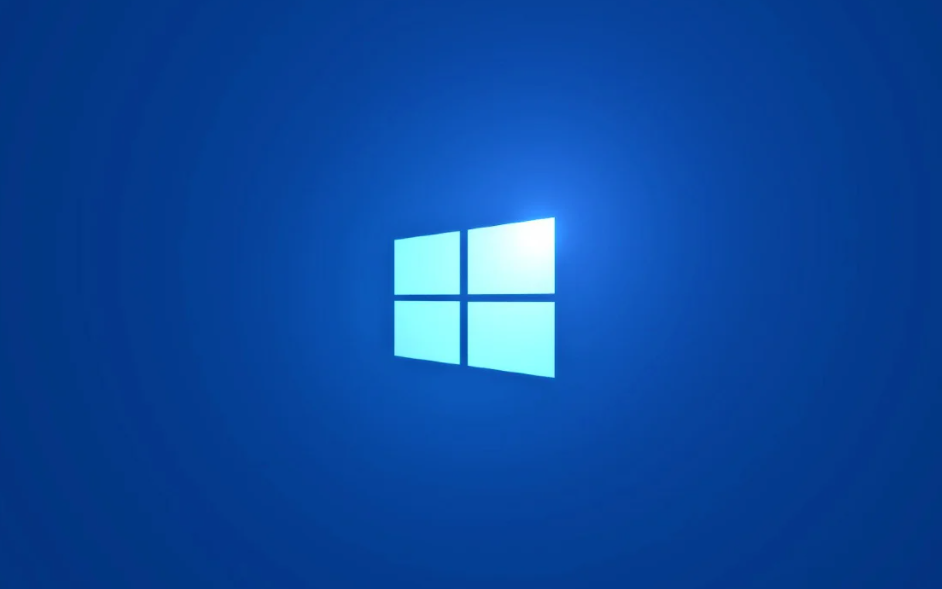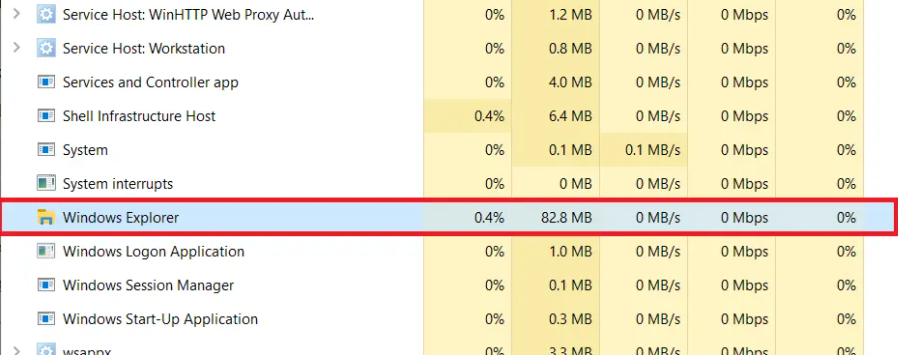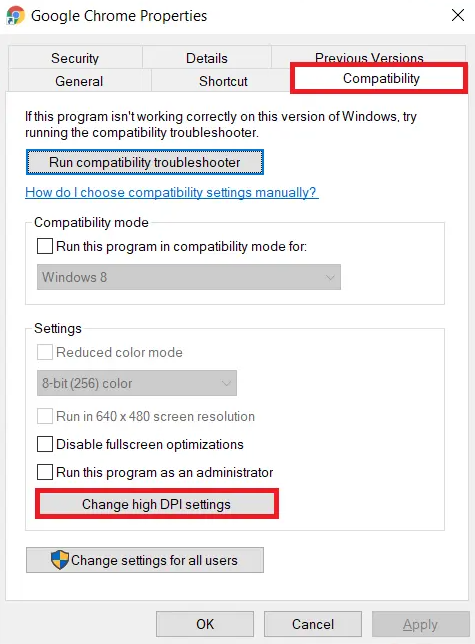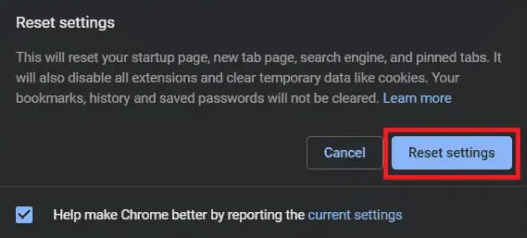
The Taskbar in windows, the bar (mostly present at the bottom of the screen). That houses important data such as the date & time information, volume controls, shortcut icons, search bar, as well. Disappears automatically whenever you guys are playing a game or watching a random video in fullscreen. This helps in giving users a much more immersive experience. In this article, we are going to talk about How to Fix Taskbar Shows in Fullscreen in Windows. let’s begin!
Although, the Taskbar not hiding or disappearing automatically in fullscreen programs is a really well-known issue and has been plaguing Windows 7, 8, and 10 likewise. The issue isn’t restricted to playing fullscreen videos on Chrome or Firefox, however, also while playing games. An array of constantly blinking icons on the Taskbar can be really distracting, to say the least, and take away from the overall experience as well.
Contents
- 1 How to Fix Taskbar Shows in Fullscreen in Windows
- 1.1 Restart explorer.exe process
- 1.2 Disable Lock Taskbar | Taskbar Shows in Fullscreen
- 1.3 Turn Off Visual Effects | Taskbar Shows in Fullscreen
- 1.4 Enable Auto-hide Taskbar feature
- 1.5 Turn Override high DPI scaling behavior of Chrome
- 1.6 Check for Windows Update
- 1.7 Disable Hardware Acceleration in Chrome | Taskbar Shows in Fullscreen
- 1.8 Conclusion
How to Fix Taskbar Shows in Fullscreen in Windows
The most common solution to the problem at hand is just to restart the explorer.exe process from the Task Manager. The Taskbar also might not hide automatically if you guys have locked it in its place or have a pending Windows update. Turning off all visual effects (animations and much other stuff) has also been reported in order to solve the issue for a few users.
You can try to enable override high DPI scaling behavior or disabling hardware acceleration in Chrome. If your Taskbar doesn’t hide automatically whenever playing a video in full screen on the web browser.
Before we start, try simply restarting your computer or unpinning all shortcut icons from the Taskbar in order to check if it fixes the issue. You can also press F11 (or fn + F11 in many systems) in order to switch to the fullscreen mode for all applications.
Restart explorer.exe process
Most users assume that the explorer.exe process is solely concerned along with the Windows File Explorer, however, that’s not true. The explorer.exe process controls the whole graphical user interface of your computer. Also, includes the File Explorer, Taskbar, start menu, desktop, as well.
A corrupt explorer.exe process can also lead to a number of graphical issues the same as the Taskbar not automatically disappearing in fullscreen. Simply restarting the process can solve any and all issues related to it as well.
- Launch the Windows Task Manager via any of the following methods:
- Tap on the Ctrl + Shift + ESC keys on your keyboard to directly open the application.
- Tap on the Start button or on the search bar (Windows Key + S), then type Task Manager, and click Open whenever the search returns.
- Right-tap on the start button or press the Windows key + X in order to access the power user menu and select Task Manager from there.
- You can also open Task Manager via right-clicking on the Taskbar and then select the same.
- Make sure you are on the Processes tab of the Task Manager.
- Then locate the Windows Explorer process. If you have an explorer window open in the background, the process will also appear at the very top of the list under Apps.
- But, if you do not have an active Explorer window, you will have to scroll quite a bit to find the required process (under Windows processes).

- You can either select to End the Explorer process and then restart your computer. In order to get the process up anew and running again or restart the process yourself.
- We advise you to restart the process first, and if that doesn’t really solve the problem at hand, terminate it.
- In order to restart the Windows Explorer process, right-click on it and select Restart. You can also restart via clicking on the Restart button at the bottom of the Task Manager after choosing the process.
- Go ahead and run the application in which the Taskbar kept showing up even when in full screen. See if you’re able to fix Taskbar Showing in Fullscreen issue as well. If it still shows, End the process and then restart manually.
- In order to end the process, right-click and select End task from the context menu. Ending the Windows Explorer process will also cause the Taskbar and the graphical user interface in order to disappear entirely until you restart the process. The Windows key on your keyboard will also stop working until the next Restart as well.
- Tap on File at the top left of the Task Manager window and then choose Run New Task. If you accidentally closed the Task Manager window, tap on ctrl + shift + del and then select Task Manager from the next screen.
- In the textbox, you have to type explorer.exe and tap on the OK button to restart the process.
Disable Lock Taskbar | Taskbar Shows in Fullscreen
‘Lock the Taskbar’ is one of the newer taskbar features introduced in Windows OS and permits the user to essentially lock it in place and avoid accidentally moving it. However, also stops the Taskbar from disappearing when you switch to full screen mode as well. When locked, the Taskbar will persist on the screen when overlaying on the fullscreen application.
In order to unlock the Taskbar, bring up its context menu via right-clicking anywhere on the Taskbar. If you see a check/tick next to the Lock Taskbar option, and it implies that the feature is indeed enabled. Simply tap on ‘Lock the Taskbar’ in order to disable the feature and unlock the Taskbar.
You can also find the option to lock/unlock Taskbar at Windows Settings > Personalization > Taskbar.
Turn Off Visual Effects | Taskbar Shows in Fullscreen
Windows incorporates a number of subtle visual effects to make using the OS more pleasing. However, these visual effects can also clash with other visual elements like the Taskbar and lead to some issues. Try disabling the visual effects and check if you’re able to fix Taskbar Showing in Fullscreen issue:
- Open Control Panel via typing control or control panel in the Run command box (Windows key + R) and then tap on OK.
- From All Control Panel items, then tap on System.
In previous Windows versions, the user will first need to open System and Security and then select System in the next window. (You can also open the System window, via right-clicking on This PC in File Explorer and then choosing Properties.)
- Tap on Advanced system settings presents on the left side of the System window.
- Tap on the Settings button that is present under the Performance section of Advanced settings.
- In the following window, make sure you are on the Visual effects tab and then choose the Adjust for best performance option. Choosing the option will automatically untick all the visual effects that are listed underneath.
- Tap on the Apply button and then exit via clicking on the close button or OK.
Enable Auto-hide Taskbar feature
You can also turn on the auto-hide taskbar feature in order to solve the issue temporarily. Through enabling auto-hide, the Taskbar will always remain hidden unless you bring your mouse pointer to the side of the screen where the Taskbar is placed as well. This works as a temporary solution like the issue will continue to persist if you disable the auto-hide feature.
- Open Windows Settings via clicking on the Start button and then the Settings icon (cogwheel/gear icon). Or also use the keyboard shortcut Windows key + I. You can also search for Settings in the search bar and then click on enter.
- In the Windows Settings, and then tap on Personalization.
- At the bottom of the navigation pane on the left side, then you will find Taskbar. Tap on it.
(You can directly access Taskbar settings via right-clicking on the Taskbar and then choosing the same.)
- Then the right, you will find two automatically hidden options. One for when the computer is in desktop mode (normal mode) and then another for when in tablet mode. Enable both the options via clicking on their respective toggle switches.
Turn Override high DPI scaling behavior of Chrome
If the Taskbar not hiding automatically is only prevailing whenever playing fullscreen videos in Google Chrome. Then you can try to enable the override high DPI scaling behavior feature.
- Right-click on the Google Chrome shortcut icon on your desktop and choose Properties from the context menu.

- Move to the Compatibility tab of the Properties window and tap on the Change high DPI settings button.
- Now in the following window, check the box next to Override high DPI scaling behavior.
- Tap on OK in order to save the changes and exit.
See if you’re able to fix Taskbar Showing in Fullscreen issue as well. If not, then continue along with the next method.
Check for Windows Update
If none of the above-explained methods really worked for you, it is also possible that there is an active bug in your current Windows build. That is avoiding the Taskbar from disappearing automatically, and if that’s really the case. Then Microsoft has also likely released a new Windows update fixing the bug as well. All you have to do is update your computer in order to run on the latest version of Windows. To update Windows:
- Open Windows Settings via tapping Windows key + I.
- Tap on Update & Security.
- If there are any updates available, then you will be notified about the same on the right panel. You can also manually check for new updates via tapping on the Check for updates button.
- If there are indeed any updates available for your System, install them, and then after installation. Now check if the Taskbar that shows in the fullscreen problem has been resolved.
Now let us and all the other readers know which of the above-listed solutions resolved the Taskbar showing in fullscreen issues in the comments section.
Disable Hardware Acceleration in Chrome | Taskbar Shows in Fullscreen
Another trick to solving fullscreen issues in Chrome is just to disable hardware acceleration. The feature essentially redirects some tasks like page loading and rendering from the processor to the GPU. Turning off the feature is known to fix the issues along with the Taskbar.
- Open Google Chrome via double-clicking on its shortcut icon or through searching for the same in the Windows search bar and then tapping on Open.
- Tap on the three vertical dots (or horizontal bars, relying on the Chrome version) at the top right corner of the Chrome window and choose Settings from the drop-down menu.
- Now you can also access Chrome Settings via visiting the following URL chrome://settings/ in a new tab.
- Scroll all the way down to the end of the Settings page and then tap on Advanced.
(Or tap on the Advanced Settings option present on the left panel.)
- Now under Advanced System Settings, you will find the option to enable-disable Hardware acceleration. Tap on the toggle switch next to Use Hardware Acceleration when available in order to turn it off.
- Now, go ahead and play a YouTube video in full screen in order to check if the Taskbar continues to show. If it does, you guys may want to reset Chrome to its default settings.

- In order to reset Chrome: Find your way to the Advanced Chrome Settings using the above procedure and tap on the ‘Restore settings to their original defaults’. Then under the Reset and clean up section. Confirm your action via clicking on Reset Settings in the pop-up that follows.
Conclusion
Alright, That was all Folks! I hope you guys like this article and also find it helpful to you. Give us your feedback on it. Also if you guys have further queries and issues related to this article. Then let us know in the comments section below. We will get back to you shortly.
Have a Great Day!
Also See: How to Fix Steam Corrupt Disk in Windows






